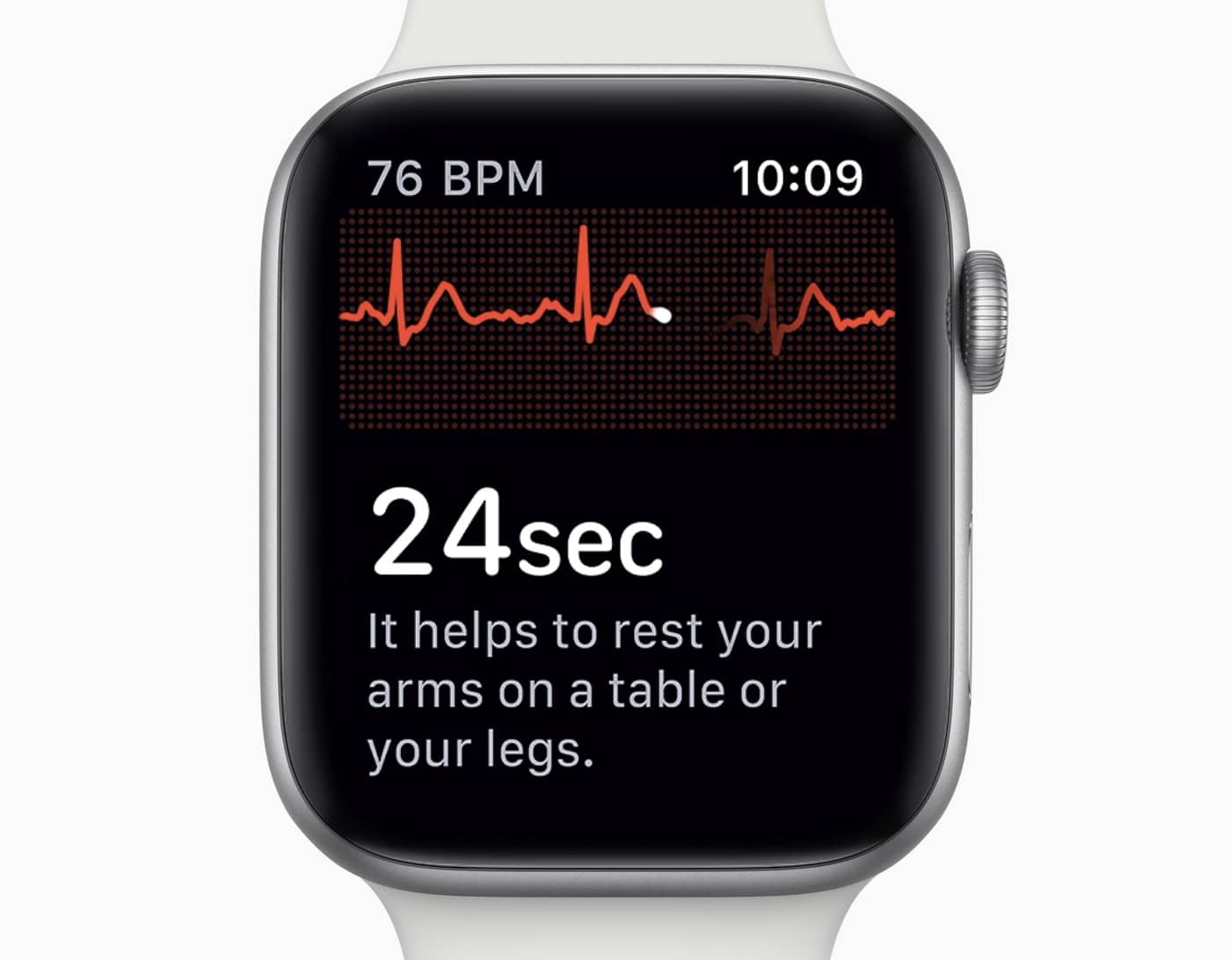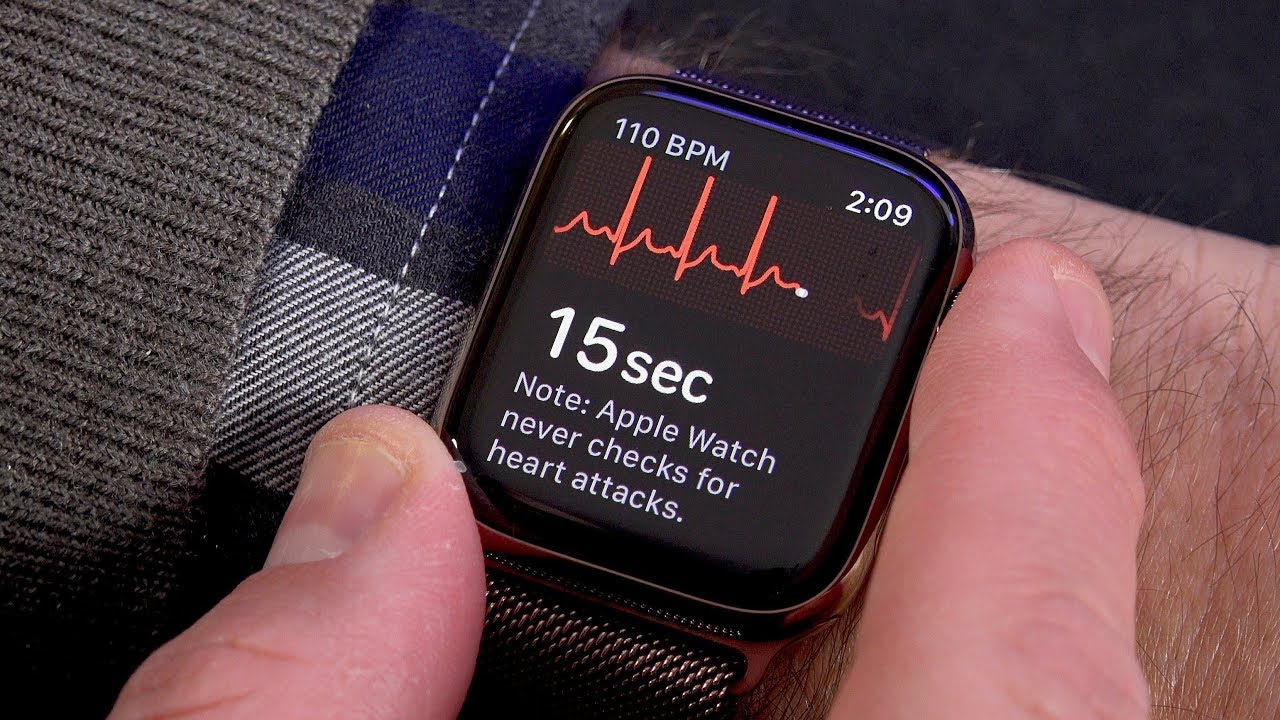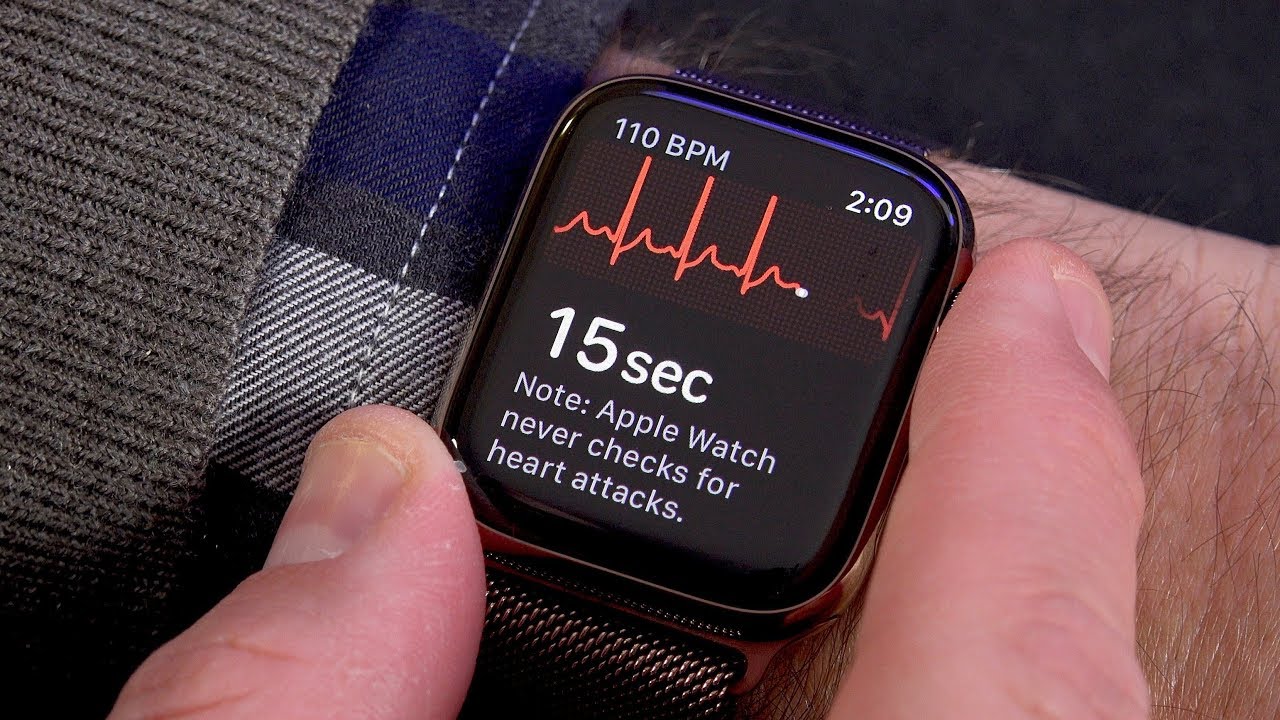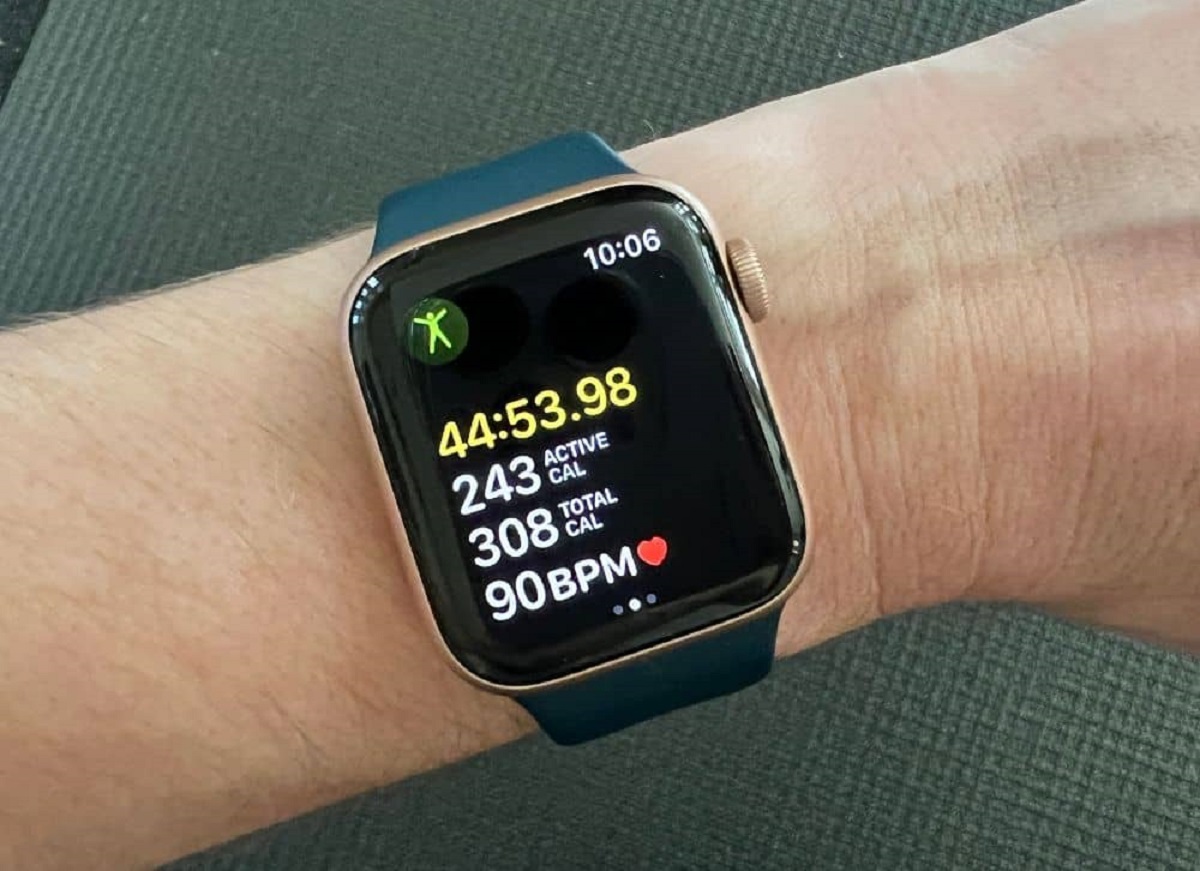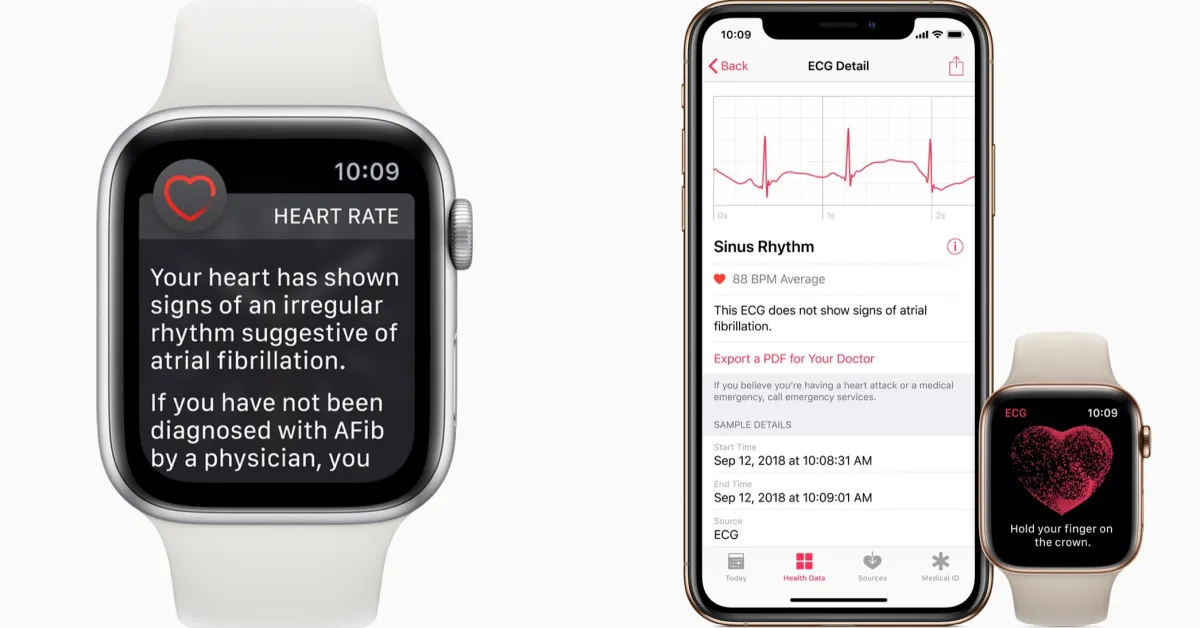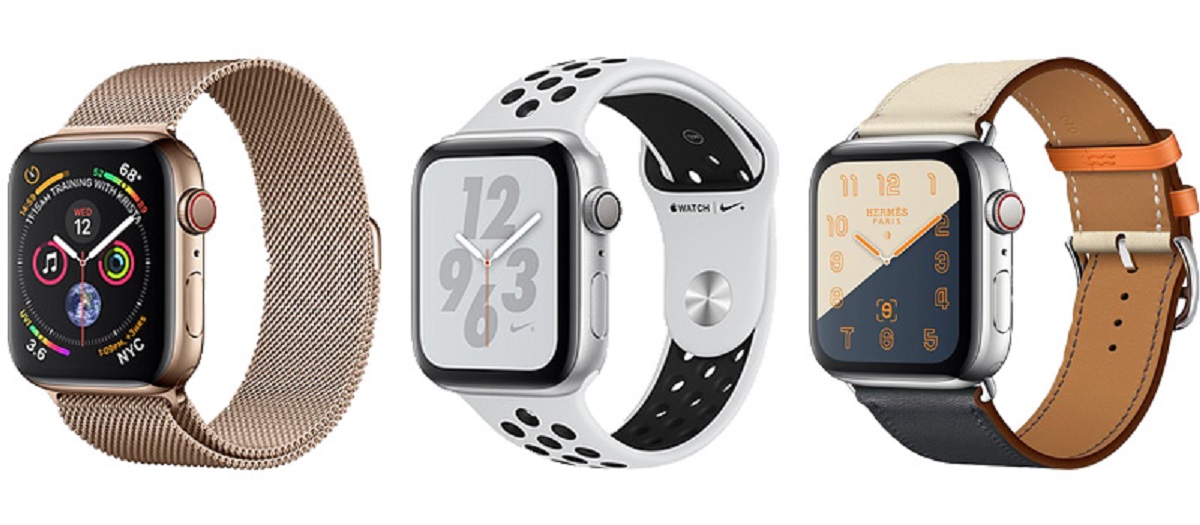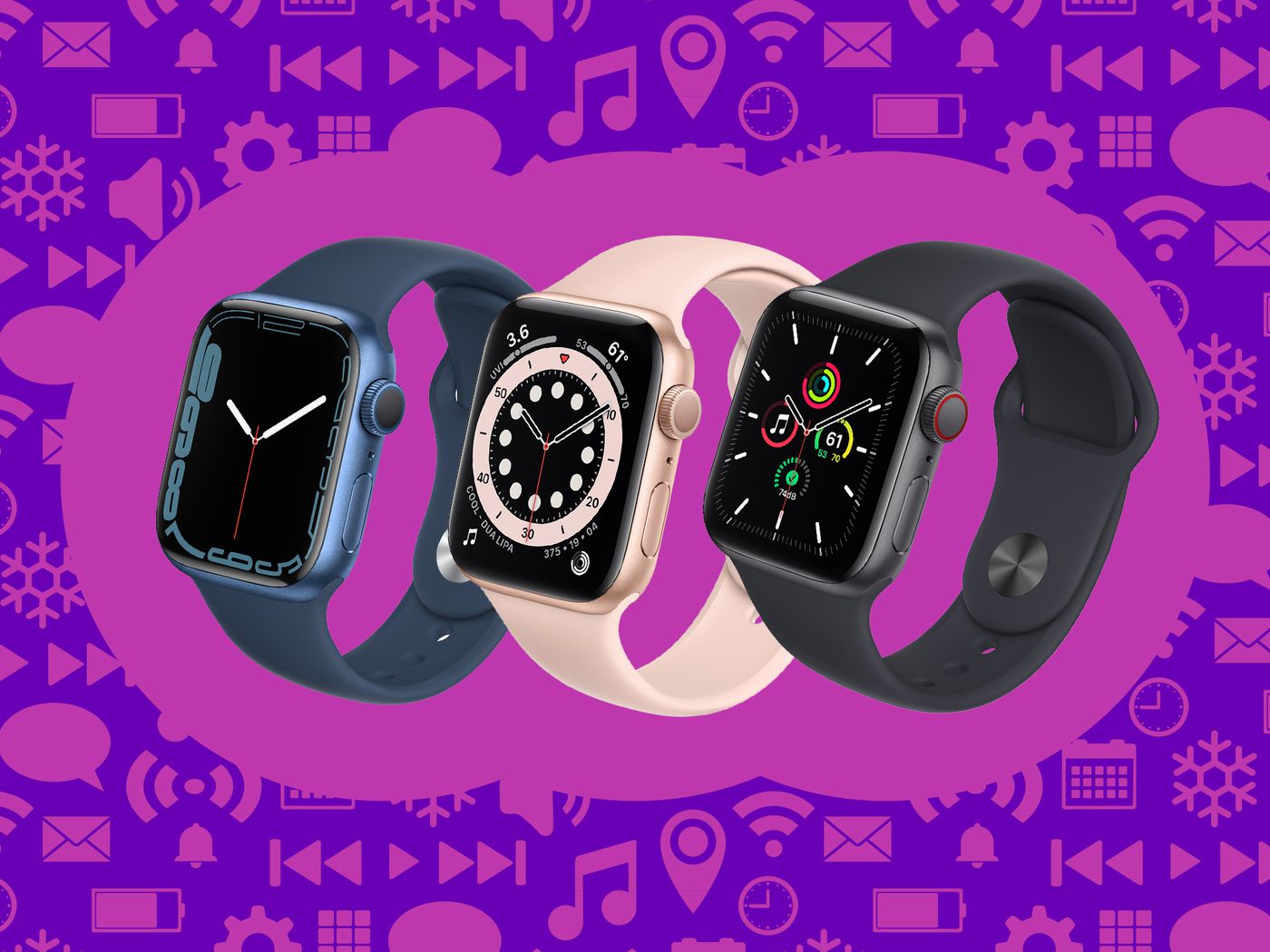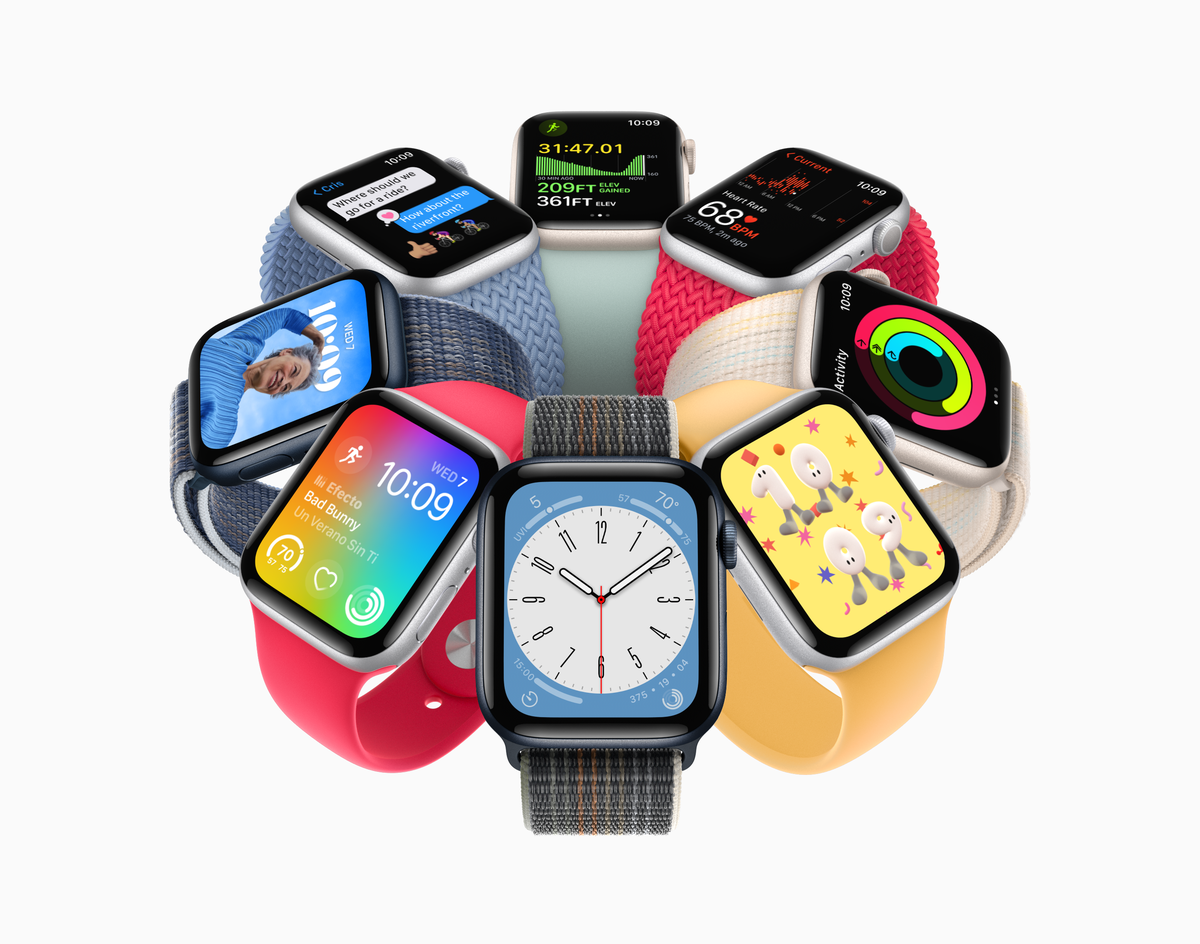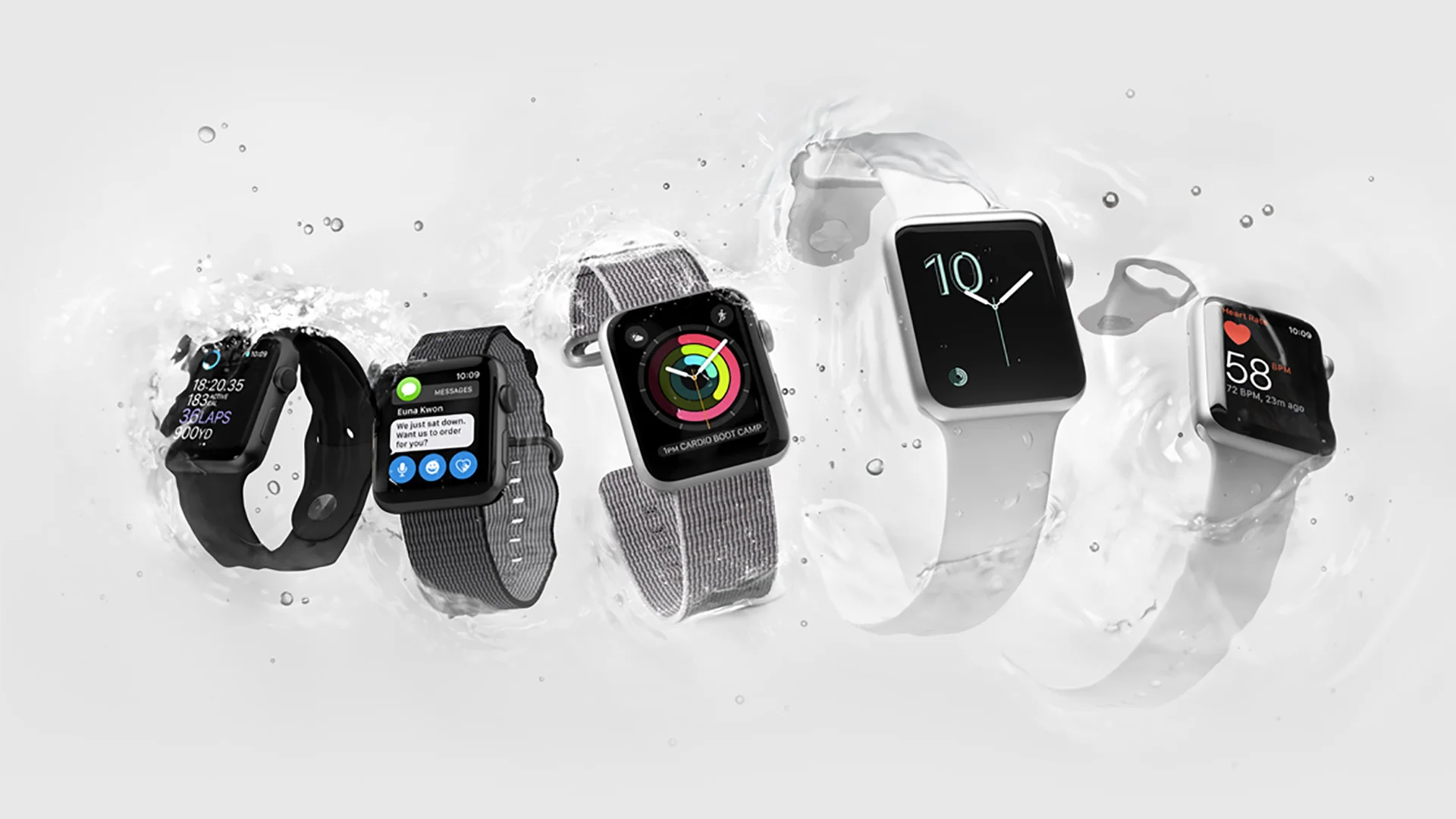Introduction
The Apple Watch has revolutionized the wearable technology market since its launch in 2015. With a range of health monitoring features, it has become a go-to device for fitness enthusiasts, health-conscious individuals, and those seeking to proactively manage their well-being. One of the standout features of the Apple Watch is its ability to perform an electrocardiogram, commonly known as an ECG.
An electrocardiogram is a diagnostic test that records the electrical activity of the heart. It provides valuable insights into the heart’s rhythm, detects irregularities, and aids in the diagnosis of various heart conditions. The Apple Watch’s ECG feature has garnered significant attention, as it empowers users to monitor their heart health conveniently from their wrist.
In this article, we will delve into the Apple Watch’s ECG feature, explore which Apple Watch models have this capability, and help you understand how this technology can benefit your overall health and well-being.
Disclaimer: It’s essential to note that while the Apple Watch’s ECG feature is a valuable tool for monitoring heart health, it should not be a substitute for professional medical advice. If you have concerns or suspect a heart condition, please consult with a healthcare professional.
What is an ECG?
An electrocardiogram (ECG) is a medical test that records the electrical activity of the heart. It is a non-invasive procedure that involves placing electrodes on specific areas of the chest, arms, and legs to capture the heart’s electrical signals. The ECG machine then converts these signals into a visual representation, displaying the heart’s electrical patterns as a series of waves on a graph.
The ECG provides healthcare professionals with valuable information about the heart’s rhythm and can assist in diagnosing various heart conditions. By analyzing the waves generated by the ECG, medical experts can identify irregularities, such as arrhythmias (abnormal heart rhythms), myocardial infarctions (heart attacks), and other cardiac abnormalities.
The ECG is a powerful tool for detecting and monitoring heart problems. It is commonly used during routine check-ups, before surgery, or when symptoms such as chest pain, palpitations, or shortness of breath are present. By capturing the heart’s electrical activity, the ECG allows healthcare professionals to make informed decisions about the best course of treatment for patients.
An ECG typically consists of several waves, including the P wave, QRS complex, and T wave. Each of these waves represents a different phase of the heart’s electrical activity. The P wave represents the activation of the atria, while the QRS complex indicates the contraction of the ventricles. The T wave represents the recovery and relaxation of the ventricles.
By analyzing the shape, duration, and intervals between these waves, healthcare professionals can identify abnormalities in the heart’s electrical system. This information is crucial in diagnosing conditions such as atrial fibrillation, ventricular fibrillation, heart blocks, and other cardiac arrhythmias.
In summary, an electrocardiogram (ECG) is a diagnostic test that records the electrical activity of the heart. It provides valuable insights into the heart’s rhythm and can aid in the diagnosis of various heart conditions. The ECG is a non-invasive procedure that involves placing electrodes on the chest, arms, and legs to capture the heart’s electrical signals and display them as waves on a graph. This information is vital for healthcare professionals to make informed decisions about patient care and treatment.
Apple Watch ECG Feature
The Apple Watch’s ECG feature is a game-changer in the world of wearable technology. It allows users to perform a single-lead electrocardiogram directly from their wrist. With just a simple touch and the electrodes built into the back crystal and Digital Crown of the watch, users can obtain a snapshot of their heart’s electrical activity in just 30 seconds.
Once the ECG is captured, the Apple Watch analyzes it using advanced algorithms to determine if the heart is beating in a regular sinus rhythm or if atrial fibrillation (AFib) is present. AFib is one of the most common types of irregular heart rhythms and can increase the risk of stroke and other heart-related complications.
In addition to providing information about the heart’s rhythm, the Apple Watch’s ECG feature also generates a detailed report that can be shared with healthcare professionals. This report includes data on heart rate, rhythm classification, and even recording samples for deeper analysis.
It’s important to note that the Apple Watch’s ECG feature is intended for informational purposes only and should not replace professional medical advice or diagnosis. It is designed to provide users with a convenient tool to monitor their heart health and detect potential irregularities. If the Apple Watch detects an irregular rhythm, it is crucial to consult a healthcare professional for further evaluation and guidance.
The Apple Watch’s ECG feature has received clearance from regulatory authorities, such as the U.S. Food and Drug Administration (FDA), which recognizes it as a Class II medical device. This regulatory clearance ensures that the ECG feature meets specific safety and effectiveness standards.
Overall, the Apple Watch’s ECG feature is an impressive addition to its health monitoring capabilities. By providing users with the ability to perform a quick and convenient ECG, it empowers individuals to take a proactive approach to their heart health. However, it’s essential to remember that the results should always be interpreted in consultation with a healthcare professional for a comprehensive evaluation.
Which Apple Watch Models Have ECG?
The ECG feature of the Apple Watch is not available on all models. It was first introduced with the Apple Watch Series 4 and has since been included in subsequent models. Let’s take a closer look at which Apple Watch models have the ECG capability.
Apple Watch Series 6: The latest addition to the Apple Watch lineup, the Series 6, features the ECG app. Users can take ECG readings anytime and anywhere by simply launching the app and following the on-screen instructions.
Apple Watch Series 5: The Apple Watch Series 5 also includes the ECG feature. With this model, users can take advantage of the ECG app, enabling them to monitor their heart rhythm and detect any irregularities.
Apple Watch Series 4: The ECG feature was first introduced with the Apple Watch Series 4. This model comes equipped with the necessary hardware and software to perform ECG readings. Users can access the ECG app and obtain valuable insights into their heart’s electrical activity.
Apple Watch Series 3 and earlier: Unfortunately, the ECG feature is not available on the Apple Watch Series 3 and earlier models. If you own one of these earlier models, you may not have access to the ECG capability. However, these models still offer a range of other health monitoring features.
It’s important to keep in mind that even if you own an Apple Watch with ECG capabilities, it is not a substitute for professional medical advice or diagnosis. The ECG readings should be interpreted in consultation with a healthcare professional for a comprehensive evaluation of your heart health.
In summary, the ECG feature is available on the Apple Watch Series 4, Series 5, and the latest Series 6 models. By incorporating this capability, Apple has provided users with a convenient tool to monitor their heart rhythm and potentially detect irregularities. If you own one of these models, you can take advantage of the ECG app and gain insights into your heart’s electrical activity.
Apple Watch Series 6
The Apple Watch Series 6 is the latest iteration of Apple’s popular smartwatch lineup, and it comes with an impressive array of features, including the ECG capability. With the ECG app built into the Series 6, users can easily monitor their heart’s electrical activity and gain insights into their heart health.
The ECG feature on the Apple Watch Series 6 works by leveraging the electrical sensors on the back crystal and Digital Crown of the watch. To take an ECG reading, users simply need to launch the ECG app on their Series 6 watch and place their finger on the Digital Crown. The watch then measures the electrical signals produced by the heart, capturing a snapshot of the heart’s rhythm in just 30 seconds.
Once the ECG reading is complete, the Series 6 watch analyzes the data and provides a clear result. The app will indicate whether the heart is beating in a regular sinus rhythm or if atrial fibrillation (AFib) is detected, which is one of the most common irregular heart rhythms.
It’s worth mentioning that the Apple Watch Series 6 ECG app also allows users to save and share their ECG readings with their healthcare professionals, providing valuable information for a more comprehensive assessment. This can be especially beneficial for individuals who are actively managing their heart health or have a pre-existing heart condition.
Furthermore, the Apple Watch Series 6 includes additional health features that complement the ECG functionality. It boasts a blood oxygen (SpO2) sensor, which measures the oxygen saturation level in the blood. This information can help users gain insights into their overall respiratory and cardiovascular health.
Overall, the Apple Watch Series 6 offers an advanced ECG feature that empowers users to monitor their heart health conveniently from their wrist. By combining this capability with other health-tracking features, the Series 6 watch aims to provide a comprehensive picture of the wearer’s well-being. However, it’s important to remember that the ECG feature is not a replacement for professional medical advice and should be used in conjunction with consultation from a healthcare professional.
Apple Watch Series 5
The Apple Watch Series 5, known for its advanced features and sleek design, also includes the highly sought-after ECG capability. With the ECG app built into the Series 5 watch, users can easily monitor their heart rhythm and receive valuable insights into their cardiac health.
The ECG feature on the Apple Watch Series 5 operates similarly to other ECG-enabled Apple Watches. By touching the Digital Crown for 30 seconds, the watch’s built-in sensors capture the heart’s electrical signals and generate an ECG reading. This reading provides information about the heart’s rhythm, allowing users to detect irregularities and potential signs of atrial fibrillation (AFib).
One of the key benefits of the Apple Watch Series 5 ECG app is its ability to generate reports. After taking an ECG reading, users can review a detailed report that includes important information such as heart rate, rhythm classification, and any notable recording samples. These reports can be shared with healthcare professionals to aid in further evaluation and diagnosis.
In addition to the ECG feature, the Apple Watch Series 5 offers a range of other health-focused capabilities. It includes a comprehensive optical heart rate sensor that continuously monitors heart rate throughout the day, providing users with real-time data on their cardiovascular activity.
The Series 5 watch also features an accelerometer, gyroscope, and built-in GPS, allowing for accurate tracking of physical activities such as running, cycling, and swimming. Combined with the ECG feature, these health-tracking capabilities make the Apple Watch Series 5 a versatile device for individuals who value both style and fitness.
It’s important to note that while the Apple Watch Series 5’s ECG feature provides valuable insights into heart health, it is not a substitute for professional medical advice or diagnosis. If the ECG app detects any irregularities or symptoms, it is essential to consult with a healthcare professional for further evaluation and guidance.
In summary, the Apple Watch Series 5 continues the tradition of integrating the ECG feature into its smartwatch lineup. With the ability to capture ECG readings and generate detailed reports, this watch empowers users to monitor their heart health more effectively. When combined with its other health-tracking capabilities, the Apple Watch Series 5 offers a comprehensive solution for individuals seeking to maintain a proactive approach to their well-being.
Apple Watch Series 4
The Apple Watch Series 4 introduced the ECG feature, marking a significant step forward in wearable health technology. With its sleek design and enhanced capabilities, the Series 4 watch allows users to perform electrocardiograms (ECGs) right from their wrists.
To take an ECG reading using the Apple Watch Series 4, users need to open the ECG app and touch the Digital Crown for 30 seconds. During this time, the watch’s built-in electrodes on the back crystal and Digital Crown measure the electrical signals produced by the heart. These signals provide insights into the heart’s rhythm and help users detect irregularities or signs of atrial fibrillation.
What sets the Apple Watch Series 4 apart is its ability to generate detailed ECG reports. Once the reading is complete, users can view a comprehensive report that includes information such as heart rate, rhythm classification, and recording samples. These reports can be shared with healthcare professionals for a more in-depth analysis and diagnosis.
In addition to the ECG feature, the Apple Watch Series 4 offers numerous health and fitness functionalities. Its optical heart rate sensor provides continuous heart rate monitoring throughout the day, enabling users to track their cardiovascular activity and receive insights into their fitness levels.
Furthermore, the Apple Watch Series 4 includes an accelerometer and gyroscope, allowing for accurate tracking of physical activities such as walking, running, and cycling. The watch’s built-in GPS capability further enhances the accuracy of tracking outdoor workouts.
It’s important to keep in mind that while the ECG feature on the Apple Watch Series 4 provides valuable information about heart health, it is not a substitute for professional medical advice. Users should always consult with a healthcare professional for a comprehensive evaluation and interpretation of their ECG readings and any related symptoms or concerns.
In summary, the Apple Watch Series 4 revolutionized wearable health technology by introducing the ECG feature. With its ability to perform ECG readings and generate detailed reports, this watch empowers users to monitor their heart health conveniently and proactively. Combined with its other health and fitness functionalities, the Apple Watch Series 4 offers a comprehensive solution for individuals looking to maintain an active and health-conscious lifestyle.
Apple Watch Series 3 and earlier
While the Apple Watch Series 3 and earlier models offer a range of impressive features, including fitness tracking and health monitoring capabilities, the ECG feature is not available on these models. The ability to perform electrocardiograms (ECGs) directly from the wrist was introduced with the Apple Watch Series 4.
Despite not having the ECG functionality, the Apple Watch Series 3 and earlier models still provide valuable health insights. They feature a heart rate sensor that continuously monitors the wearer’s heart rate throughout the day. This allows users to track their heart rate during workouts, detect abnormal heart rate patterns, and receive alerts if their heart rate goes above or below specified thresholds.
In addition to heart rate monitoring, the Apple Watch Series 3 and earlier models offer other health and fitness tracking capabilities. They include an accelerometer to measure movement and count steps, a gyroscope for tracking motion and orientation, and a built-in GPS for accurate distance and location tracking during outdoor activities.
The Apple Watch Series 3 and earlier also incorporate activity rings, which encourage users to maintain an active lifestyle by tracking their daily activity levels. These rings show progress towards personal goals, such as standing, exercising, and moving, providing motivation to stay active throughout the day.
Although the ECG feature is not available on the Apple Watch Series 3 and earlier models, their health and fitness functionalities still make them valuable companions for individuals looking to monitor and improve their overall well-being. It’s worth noting that users can also consider external heart rate monitors and ECG devices that can be connected to these models to expand their heart health monitoring capabilities.
In summary, the Apple Watch Series 3 and earlier models do not have the ECG feature found in the newer Apple Watch models. However, they include a heart rate sensor, activity tracking, and other health and fitness functionalities that can still contribute to a proactive approach to health management. While users of these models may not have the same ECG capabilities, they can still monitor their heart rate, track their activity levels, and engage in a healthy lifestyle with the help of these older Apple Watch models.
Conclusion
The Apple Watch’s ECG feature has become a significant breakthrough in the world of wearable technology. With the ability to perform electrocardiograms directly from the wrist, the Apple Watch empowers users to monitor their heart health conveniently and proactively.
An electrocardiogram, or ECG, is a diagnostic test that records the electrical activity of the heart. It provides valuable insights into the heart’s rhythm and can aid in the diagnosis of various heart conditions. The Apple Watch’s ECG feature allows users to capture ECG readings in just a matter of seconds and provides valuable information about their heart’s electrical activity.
While the ECG feature on the Apple Watch is a powerful tool for monitoring heart health, it is essential to remember that it is not a substitute for professional medical advice or diagnosis. The results of the ECG readings should always be interpreted in consultation with a healthcare professional for a comprehensive evaluation of heart health.
The Apple Watch Series 6, Series 5, and Series 4 are equipped with the ECG feature, allowing users to monitor their heart rhythm and potentially detect irregularities. These models also offer additional health tracking capabilities, such as optical heart rate sensors and GPS, to provide a comprehensive picture of the wearer’s well-being.
On the other hand, the Apple Watch Series 3 and earlier models do not have the ECG feature. However, they still offer valuable health and fitness functionalities, including heart rate monitoring, step tracking, and activity tracking. These models can be an excellent choice for individuals looking to maintain an active lifestyle and monitor their overall health, even if they lack the ECG capability.
In conclusion, the Apple Watch’s ECG feature has revolutionized how individuals monitor their heart health. By combining convenience, advanced technology, and powerful health tracking capabilities, the Apple Watch provides users with valuable insights into their heart’s electrical activity. Whether it’s the latest Apple Watch Series 6 or an earlier model, each has its own set of health monitoring tools, allowing users to take a proactive approach to their well-being and make informed decisions about their heart health.







